Air New Zealand’s first version of its next generation of cabins is an upgrade for the airline and its passengers, launching the new Safran Visa inward-facing herringbone, expanding into the new front-row business-plus studio class with Business Premier Luxe, modernising premium economy, and adding an ancillary upsell Economy Stretch extra-legroom section, while retaining its Economy Skycouch sofa-style triple seat.
Given the airline, its strategy, its fleet plans and its supply chains, this is a relatively safe upgrade to its longhaul fleet mainstay, the Boeing 787-9, and will also apply to the 777-300ER, its largest aircraft.
However, the Kiwi carrier’s biggest recent innovation, the Economy Skynest four-hour-slot nap bunks, is postponed until the second version of this cabin arrives on brand new Dreamliners from Boeing, in theory in early 2026.
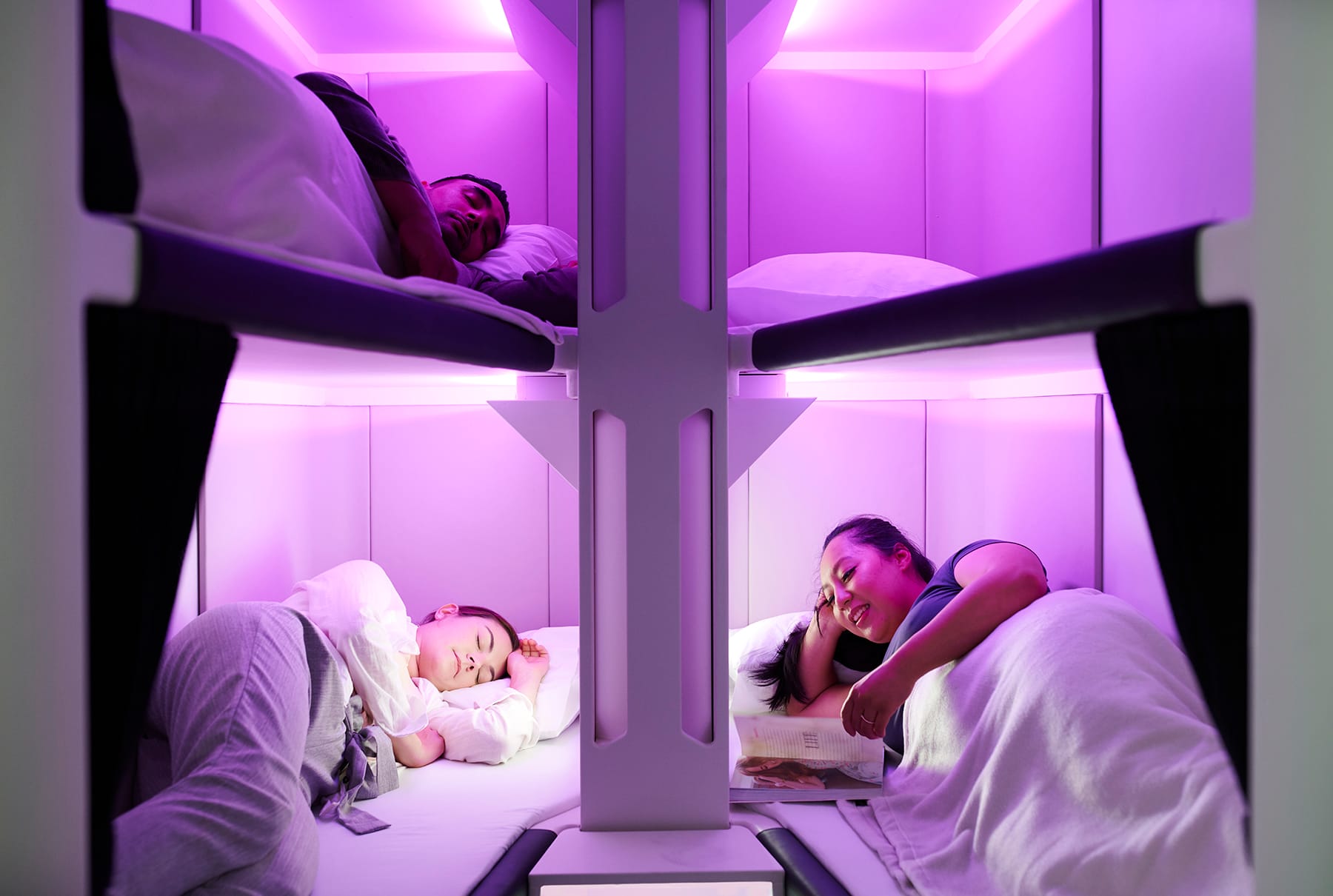
There’s quite the argument for splitting up one bigger-bang upgrade into two separate upgrades for production and certification reasons — and, indeed, media cycles — but that does mean this upgrade moves the passenger experience needle slightly less.
To put this innovation cycle in its context, the last couple of decades, Air NZ has been bravely innovative in a number of ways, pushing boundaries in ways that have sounded incredible on paper and in mockups, but which haven’t necessarily worked out well in their implementation.
The 2011 premium economy Spaceseat was perhaps the most visible situation here: after introducing the 2-2-2 angled configuration on the 777-300ER in a space that would normally take a 2-4-2 complement of seats, the airline eventually installed the seats about six inches closer in pitch than they had been in positively reviewed hangar cabin mockups.
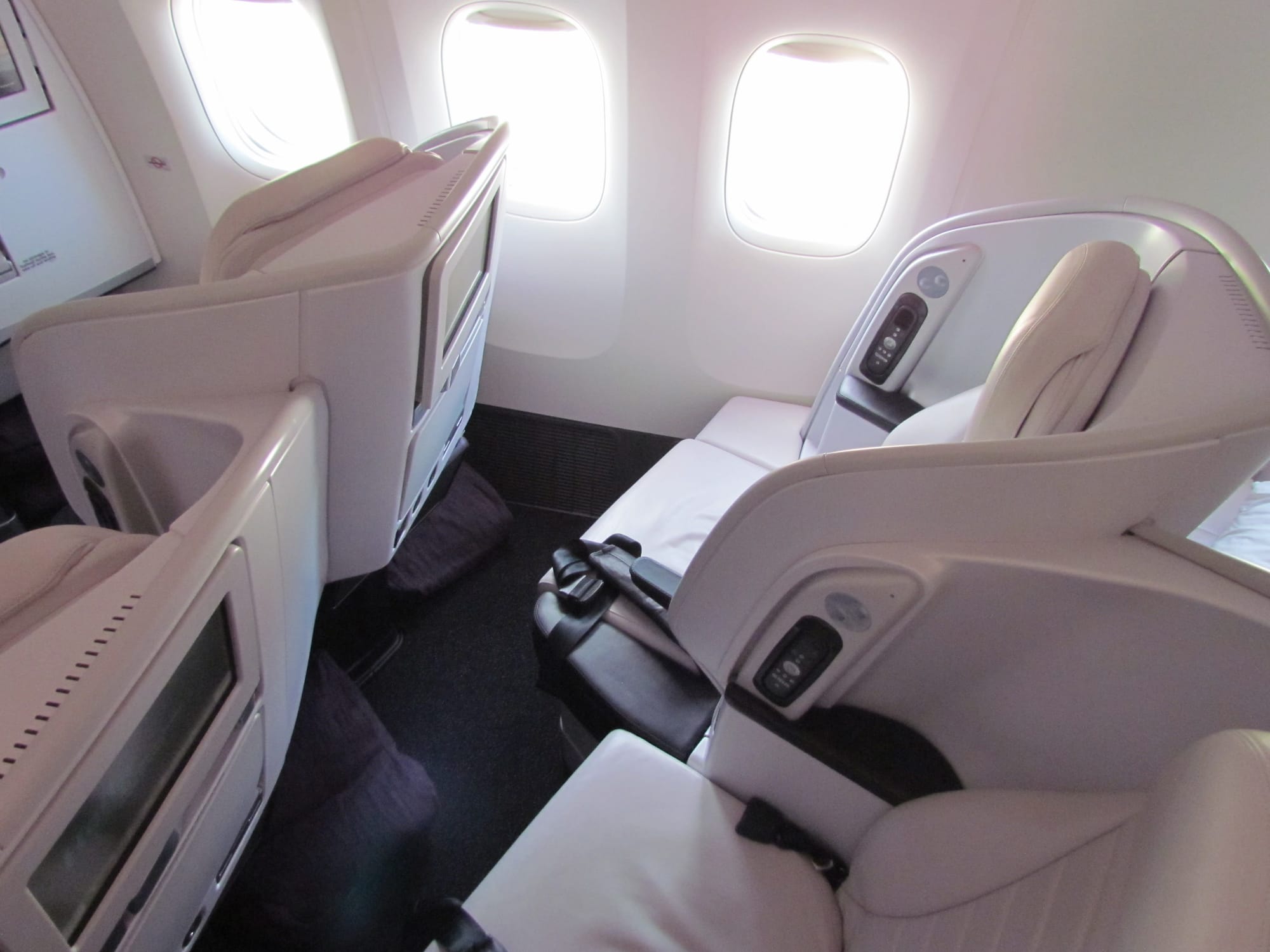
This new aircraft is less revolutionary, although it does launch a new business class, Safran’s Visa. When I spoke to Safran about these seats in 2022 — at which point Visa was in pre-certification phase — Air New Zealand was working on a 2024 timescale for these cabins, so it seems it’s with us a bit later than expected.
At this point, what we know about much of the cabins and seats remains largely rendering-based, so we do need to add a good bit of salt to what we see — especially since some of these are fairly basic renderings that do not include elements like seatbelts, details of power sockets, and so on, and some of the details differ between renderings.
I have, however, sat in all three seats at various Aircraft Interiors Expos, including the Visa seat that was largely as Air NZ will take it.
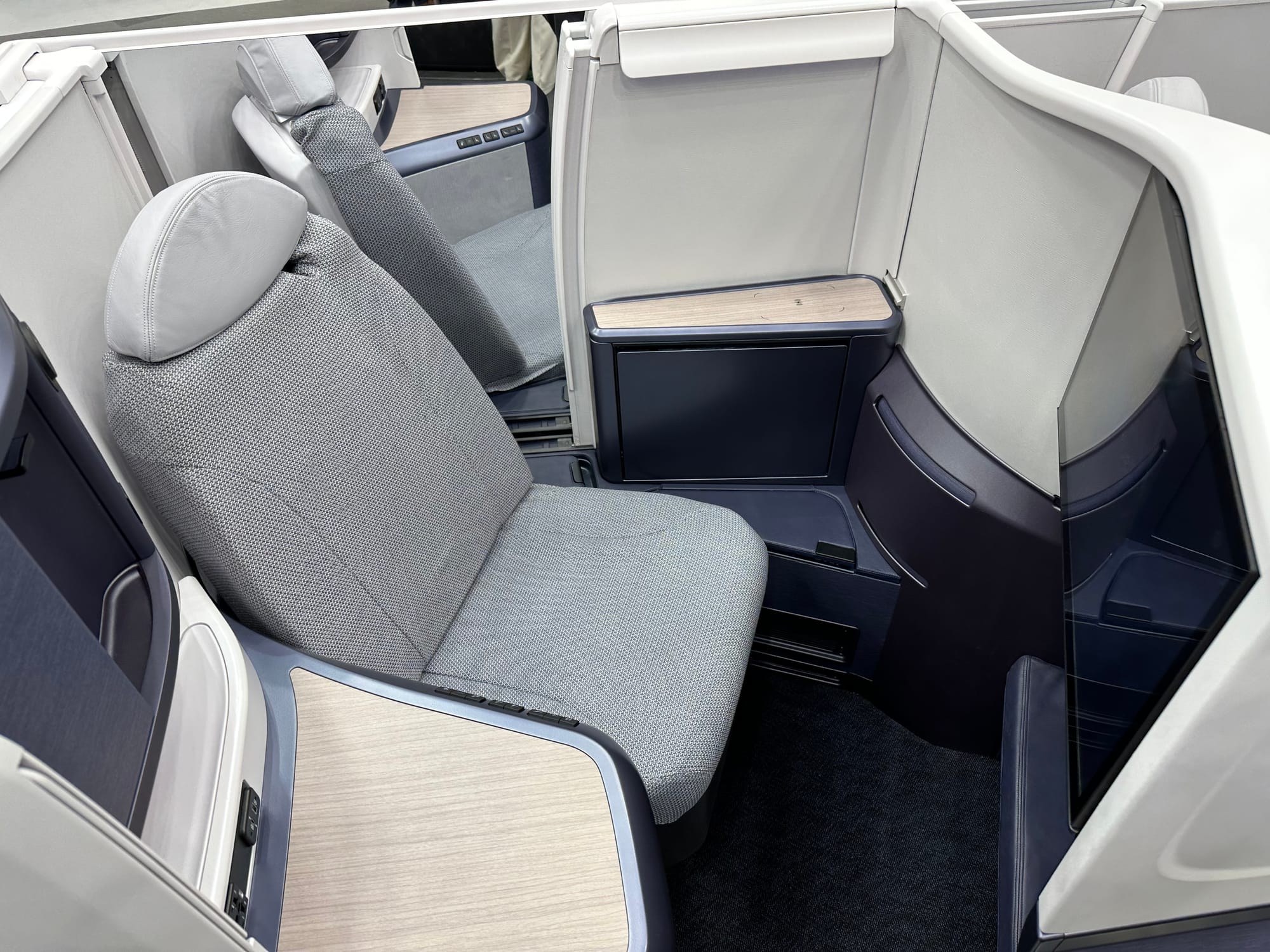
The upgrade process was, Air NZ chief executive officer Greg Foran says, “the first ever full nose-to-tail retrofit of a 787-9 Dreamliner and marks the introduction of our first new onboard product in over 15 years”. ST Engineering was the MRO (maintenance, repair and overhaul) operator, and Foran notes that “this aircraft spent 184 days in Singapore being retrofitted.”
The first aircraft to be outfitted, ZK-NZH, flew to Singapore on 13 October 2024, flew two test flights on 11 April 2025, and returned to April on 16 April, according to FlightRadar24. it will enter service in May 2025, initially from Auckland to San Francisco and Vancouver on the long haul, with Sydney, Samoa and Rarotonga on the short/medium haul, the airline says.
The second Dreamliner — not specified, but presumably ZK-NZI, which ferried to Singapore on 29 March and has not yet left — is already undergoing retrofit, with a total of seven aircraft planned for the end of the year, and the rest of the existing fleet planned to be completed by the end of 2026. It’s not clear whether this is calendar or the airline’s fiscal 2026, though, which would cross in to calendar 2027.
The new cabins and configuration match Air NZ’s existing medium-J 787-9 numbers
Air New Zealand’s Dreamliners are currently outfitted with 3.5-class layouts, with Virgin Atlantic’s Upper Class Suite (787 version) as Business Premier, a standard premium economy class recliner in a 2-3-2 layout, and 3-3-3 economy class with some rows as Skycouch extendable-footrest sofa seats.

There are two 787-9 layouts with Air NZ’s current product, which I’ll refer to as low-J and medium-J (with the J referring to a common booking code for business class):
- low-J, with 18 seats of business, 21 of premium economy, and 263 in economy
- medium-J, with 27 in business, 33 premium economy, and 215 economy
The new aircraft change the seats, add the ancillary upsell Business Premier Luxe studio class seats, and create an Economy Stretch extra-legroom economy product. As I understand it, Air NZ is planning two versions:
- medium-J (the version launching now via retrofit), with 4 in Business Premier Luxe, 22 in business, 33 in premium economy, and 213 in economy
- high-J (the forthcoming version on factory-fresh 787-9s from Boeing), with 8 in Luxe, 42 in Business Premier, 52 in premium economy, and 125 in economy — plus six Economy Skynest bunks
Presumably, this high-J (also referred to as the ultra-longhaul version) will start premium economy halfway down zone B between doors 2 and 3, with economy starting behind doors C and stretching to the rear of the aircraft.
Where premium economy ends and economy begins is a question to resolve, however, especially with a couple of Air New Zealand’s renderings showing an interesting mid-cabin monument with attached doghouse stowage.
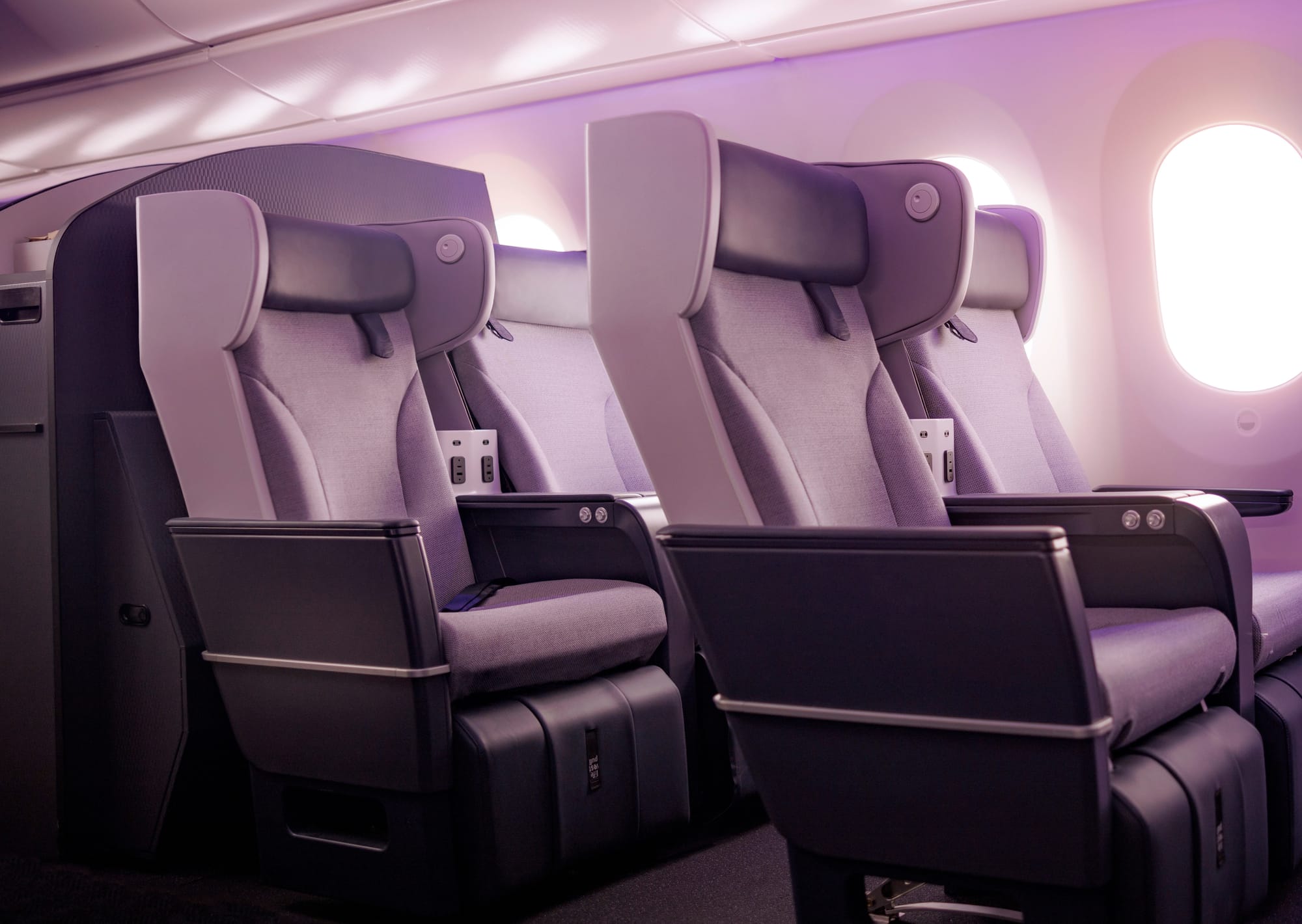
This monument, which I imagine is some sort of self-service area given what look like brown-bagged snacks in the stowage on top, doesn’t appear on the LOPA that the airline is showing off with the new medium-J (longhaul) layout, and looks physically quite different to the Sky Pantry that Air New Zealand is installing next to the centre lavatories at doors 3, well into the economy cabin.
While I’m cautious to attribute too much to a rendering — especially one where a rendering at the same angle but with people shows different details within the premium economy seat — it is certainly something to keep an eye on.
Also notable, despite the seat change, is that the previous medium-J version and this new medium-J/longhaul version are very similar in total seat numbers: one fewer business seat and two fewer in economy.
(That two-count, in case you were wondering how the maths works, stems from a pair of two seats on the left-hand side of row 35 on the old medium-J version, directly behind the cabin change from premium economy to economy, presumably to assist in getting trolleys and/or passengers through the dogleg as the aisle position changes from matching the 2-3-2 in premium to 3-3-3 in economy.)
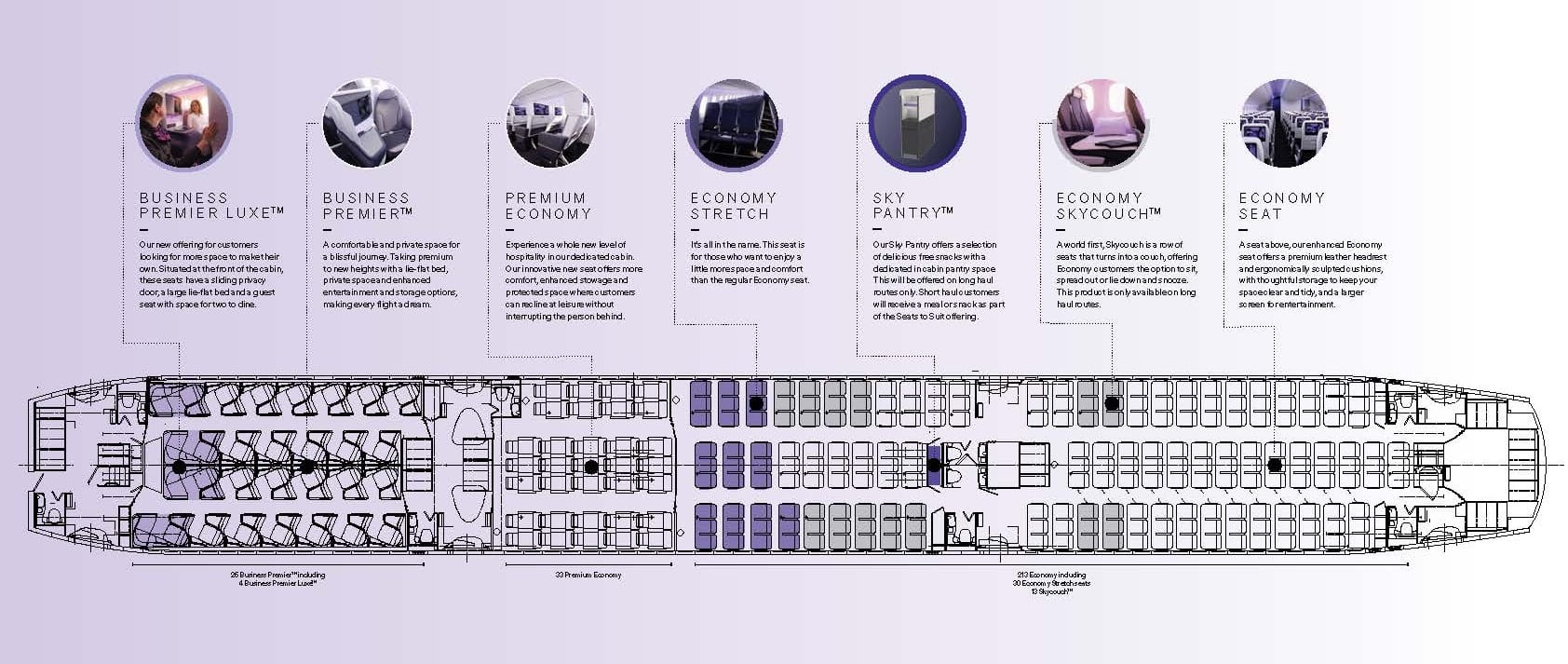
In wider implications, Air New Zealand is a good example of how new aircraft defy the previous cabin counting arithmetic system. Previously, Air NZ’s 787-9s would have been referred to as “3.5 cabin”:
- business
- premium economy
- Skycouch economy (the 0.50)
- economy
The new 787-9, counted in the same way, would contains three and four half cabins, which absolutely sounds ridiculous:
- Business Premier Luxe: 0.5
- Business Premier: 1
- Premium Economy: 1
- Economy Skycouch: 0.5
- Economy Stretch: 0.5
- Economy: 1
- plus the forthcoming Economy Skynest bunks: 0.5
Clearly, we need to frame discussion of this in a different way: there are three ticketed cabins of service, one of which has one ancillary upsell option, one of which currently has two and will have a third.
Inward-facing herringbone Safran Visa débuts in Business Premier, but is it good enough for the next 15 years?
The new Business Premier launches Safran Seats’ Visa product, one of the results its 2018 Challenge Sapiens in-house innovation contest. Challenge Sapiens also produced the single-aisle outward-facing herringbone seat Vue, manufactured by its Safran Seats France (the former Sicma) unit.
It doesn’t seem coincidental that inward-facing herringbone Visa comes from Safran Seats UK (the former Contour/Britax), which produced the first inward-facing herringbone that was also the first business class seat with direct aisle access, the 2003 Virgin Atlantic Upper Class Suite.
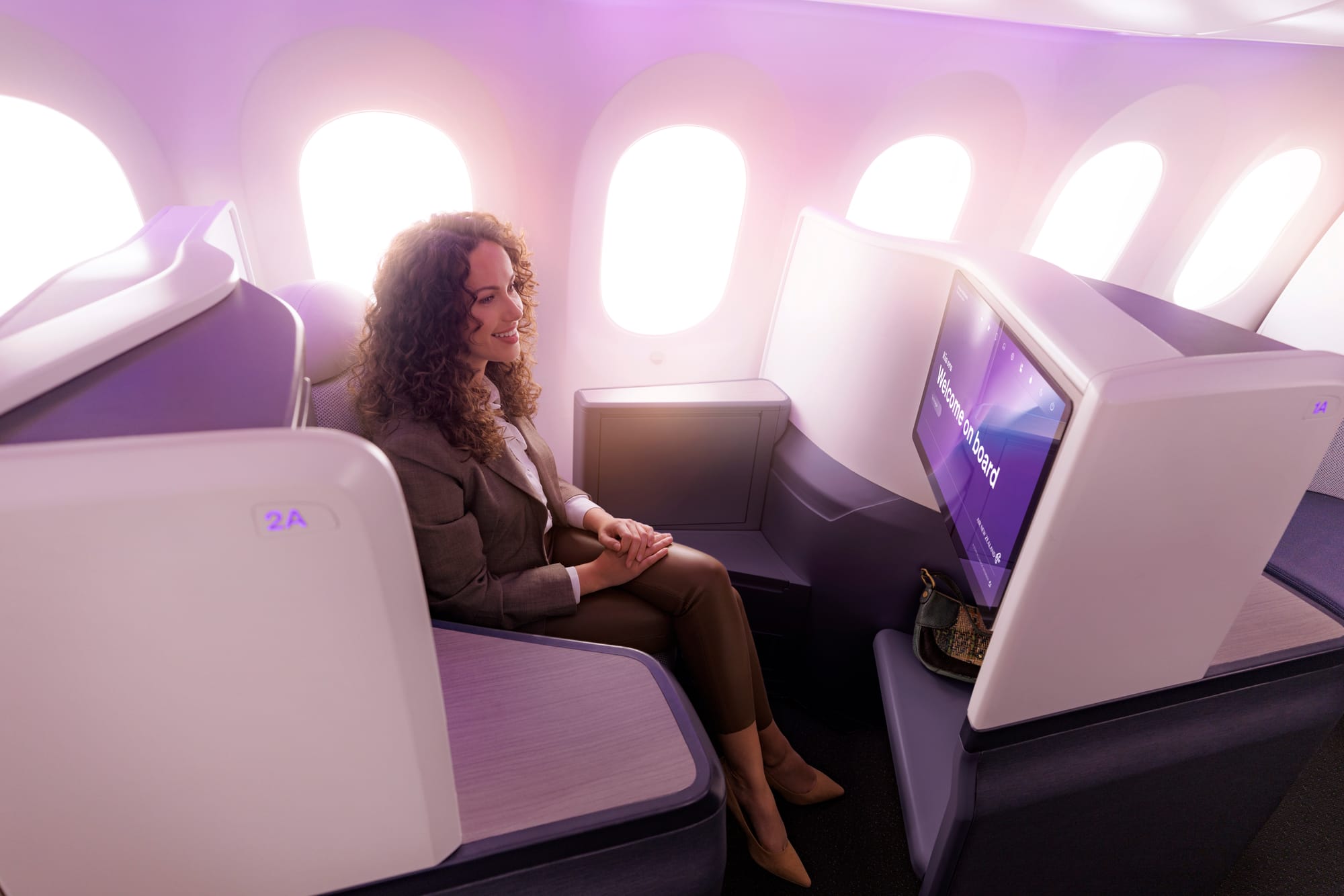
Air New Zealand transitioned from a first class plus business class premium offering in 2006, selecting that Virgin seat for its Boeing 747-400 and 777-200ER fleet. It installed a largely cosmetic update to these seats on its 777-300ER fleet in 2011, and a much narrower, more angled version on the 787 at its introduction in 2014.
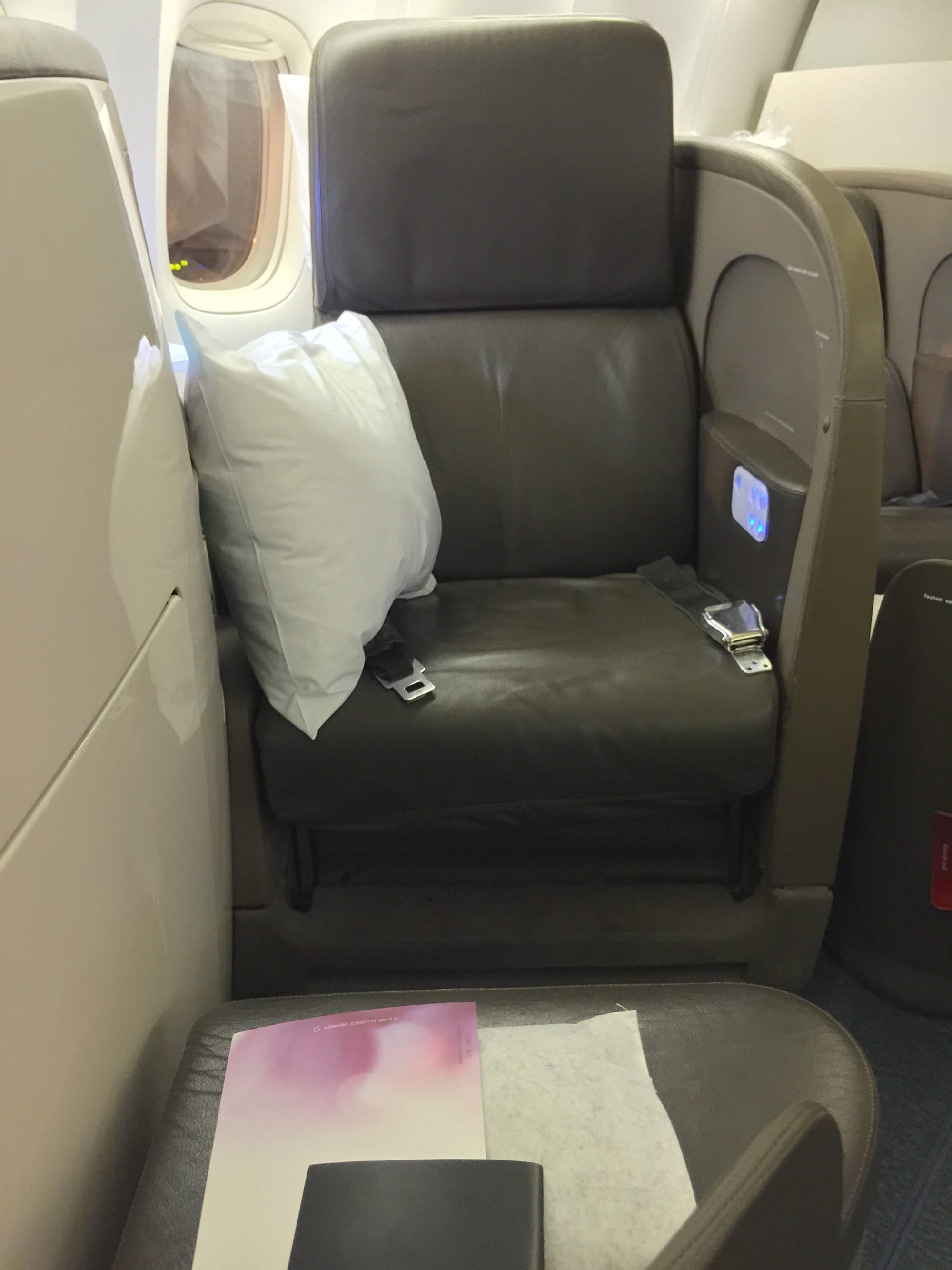
The narrower fuselage of the 787 (and, in Virgin’s case, the A340/A330) drove a series of compromises that resulted in an increased angle away from the centreline, in other words sitting more side-on than on the 747/777, and reduces seat width in order to achieve the desired commercial density for the cabin.
Nonetheless, that these seats remain flying (both on Virgin and Air NZ) is a testament to their longevity, but they are now very long in the tooth and compare unfavourably to essentially all of Air New Zealand’s competitors at this point.
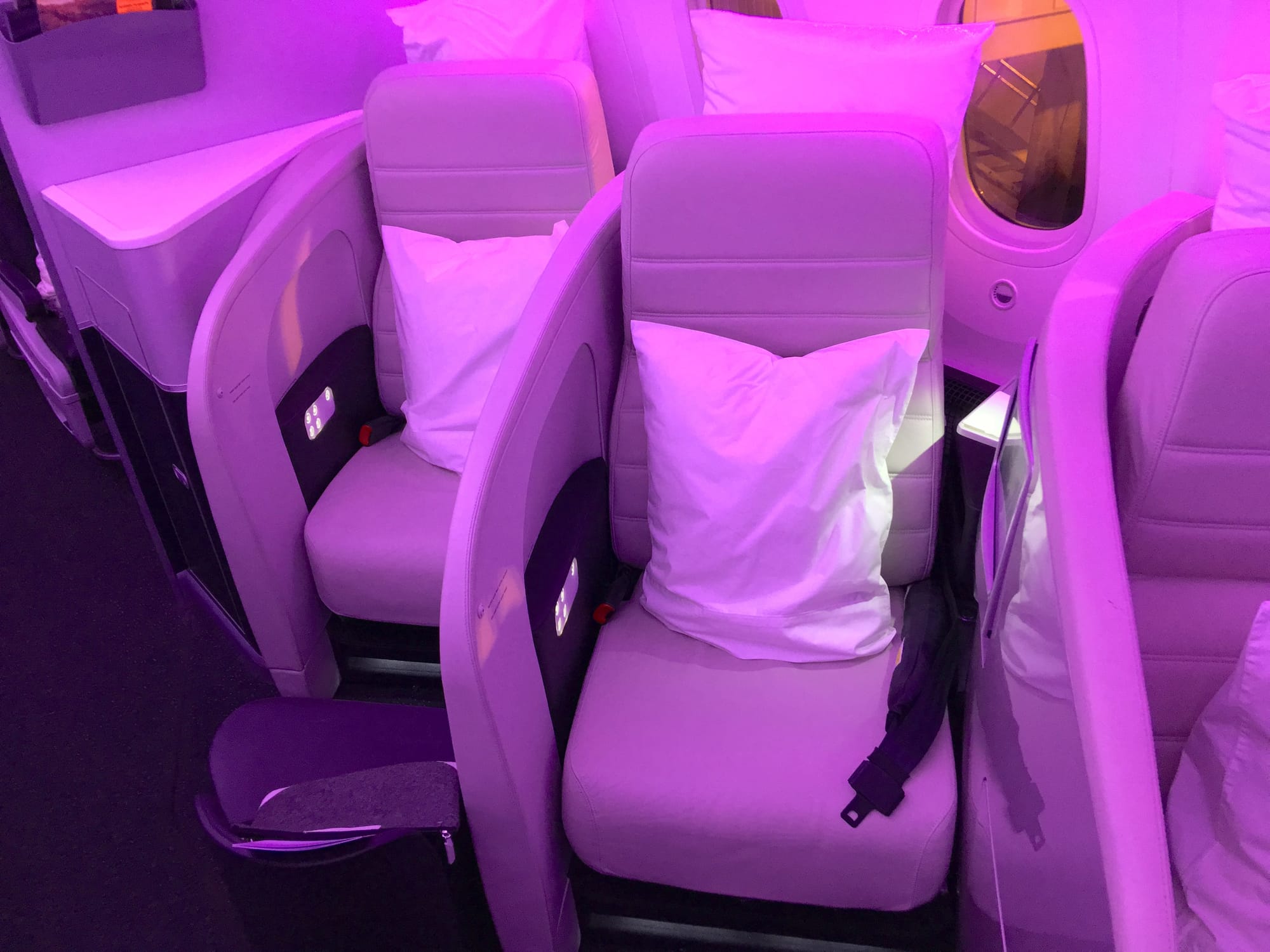
Notably for a seat entering service in 2025, Air NZ chose not to include doors in Visa’s standard business class version — only the studio class seats, Business Premier Luxe, are mini-suites. It’s also unusual in the market in being an inward-facing herringbone, since most new herringbones in business class have faced outwards since the late 2000s.
Passengers tend to prefer outward-facing herringbone seats since they feel more private and don’t involve facing other passengers, although the extent to which these factors apply depends on the specific seat model and personal preference.
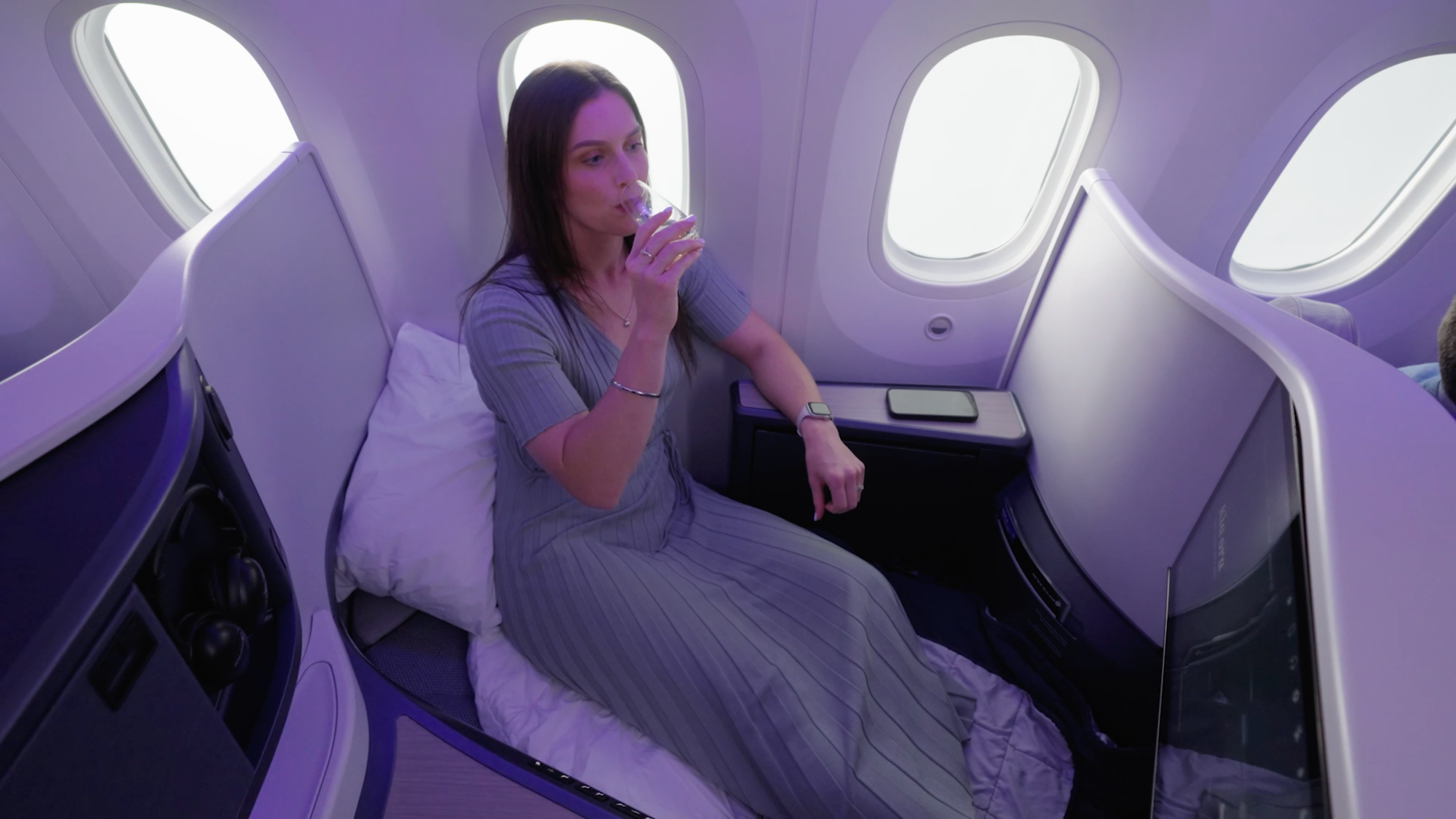
Central seat pairs feature a divider that extends backwards, and which appears to extend at least all the way down to the seat pan, enabling couples travelling together to kiss each other goodnight, even if there is no double bed mode given the inward-facing herringbone layout.
Universal AC power plus USB A+C is on offer, but confusingly, the question of whether the wireless charging point on the armrest opposite the aisle that Safran was showing in 2023 depends on which rendering of the Air New Zealand seat you examine: some show it, some don’t.
From the LOPA (layout of passenger accommodations) diagrams that Air New Zealand has released, Visa seems to be installed at the same (or very similar) angle and pitch in both its centre and outboard pairs. Some other seats in the category have been designed to enable varying the angles, enabling greater density.
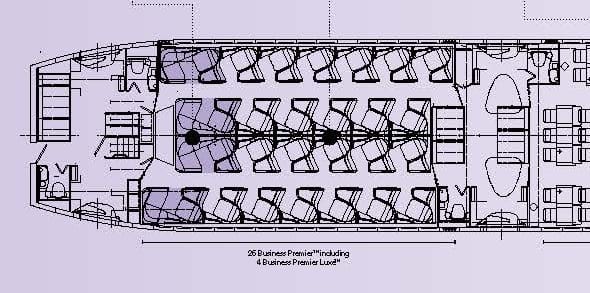
Visa last broke cover on the Safran stand at the 2023 Aircraft Interiors Expo, and with the proviso that my few minutes’ sit-down on the stand at a trade show can give only the briefest flavour of a seat, in the proverbial flesh I found it fine but not exceptional, both in the regular and front-row business-plus versions.
Air New Zealand’s existing market will likely see the seat as an improvement over its existing product, but the airline doesn’t operate in an Aotearoa-only vacuum, and a doorless inward-facing seat is unlikely to compare well in privacy terms — the main focus of business class products in the last decade — with other doored mini-suites on the 787 already in service, such as the Elevate (previously Adient) Ascent.

In aesthetics and materials terms, and I entirely acknowledge that this can be subjective, the new Business Premier and Business Premier Luxe are well behind the rest of the industry.
There are a lot of clunky shapes in greige thermoplastic that don’t really feel like they create a coherent design aesthetic, and Air NZ has provided no narrative beyond being “inspired by our native bush and the iconic native bird, the tūī”. I love the beautiful, iridescent tūī with its teals, blues and purples, and perhaps I’m missing some read-across, but these greige thermoplastics, greige fabrics and muted, unsaturated, smooth leather accents don’t really look like the bird at all.
Structurally, it feels like the seat could really have used a few more rounds of design refinement pre-industrialisation. There’s little consistency of shape or angle, with the arcs that the various circular elements ascribe varying wildly: the arc on the centre divider is different to the arc on the front end of the monitor housing, which is different again to the arc on the back end of the monitor housing, which is different again to the arc on the headrest, to the arc on the rear head shroud… you get the point.
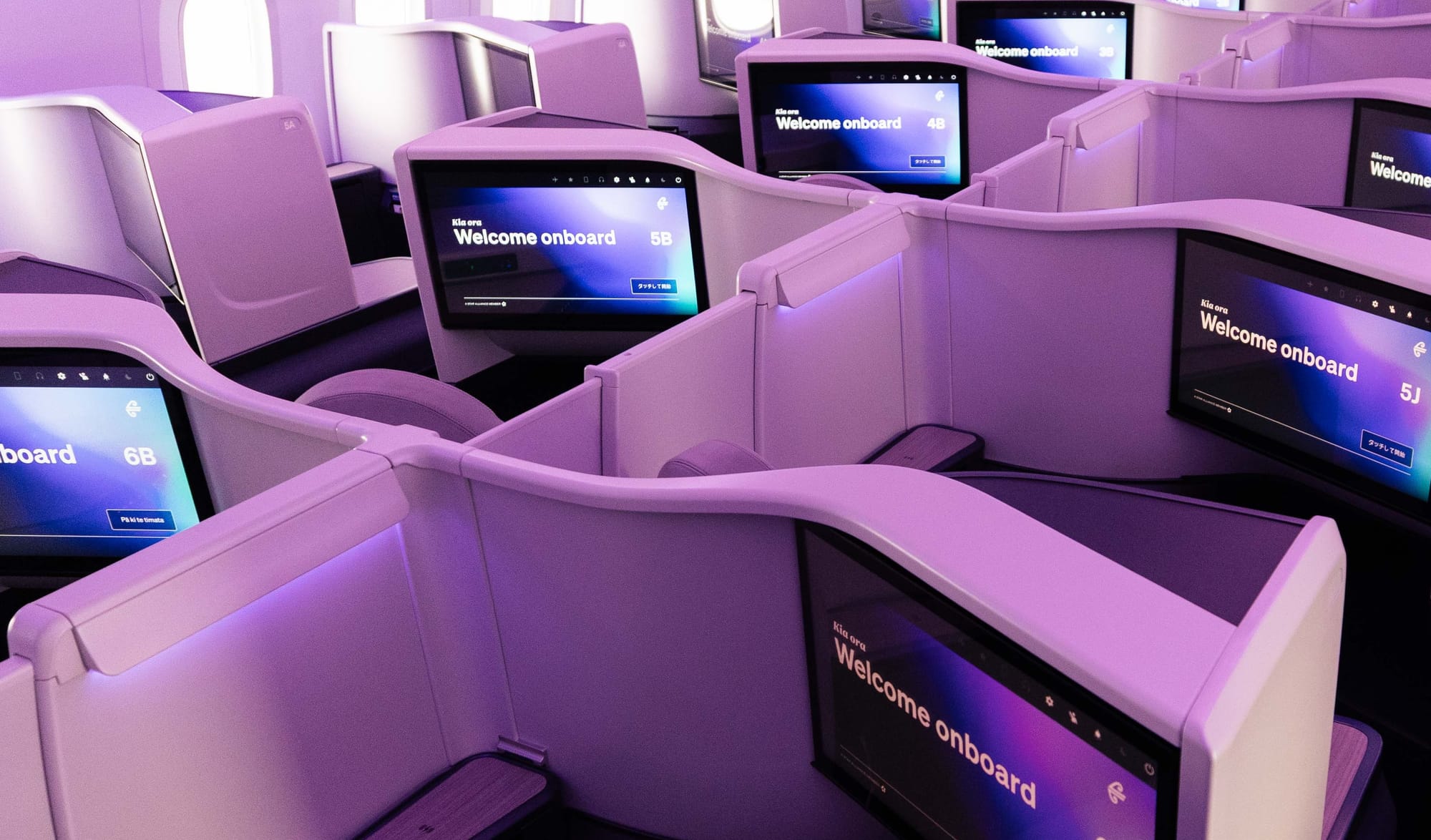
The chamfer on edges and corners don’t match in shape, size or angle, while the medium grain wood veneer effect doesn’t exactly scream modern or premium, and the seat fabric looks serviceable but lacks flair.
Yes, Air New Zealand does a good job in washing its cabins with pink-purple LEDs on boarding and at key points during the service, but light can’t save it from looking very bland. Even its own videos showing the installation process, there’s no colour to pop here, and little identity reflected in the product.
Even the fabric-effect materials in the stowage area by the headphones is a shiny smooth reflective thermoplastic, a truly baffling choice when thermoplastics suppliers have for so long been showing matte and textured products.
There are also real questions to watch out for around production quality and installation consistency, which are not areas in which Safran has corporately showered itself in glory over recent years.
Common issues such as misaligned thermoplastics, colours not matching properly with their neighbouring parts, and general build quality will only be magnified by the fact that almost all of the visible thermoplastics are the same greige — or are supposed to be.
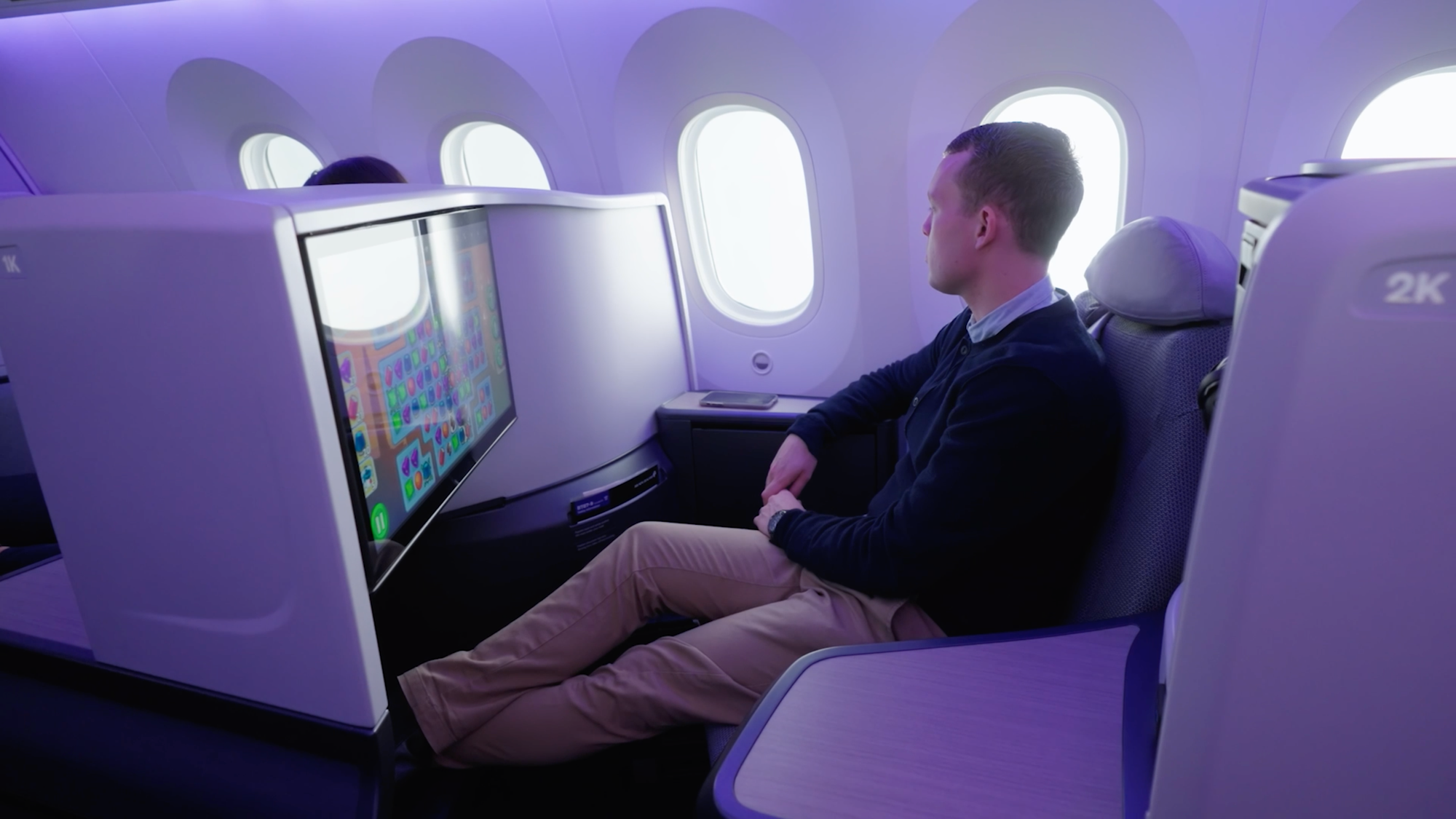
All in all: the seat is better than what came before in structure, but its space, aesthetics and privacy raise questions about whether it’s enough to stand out from the crowd, or whether Air NZ is installing a product that’s already falling behind its competitors.
Business Premier Luxe defines luxury as doors, space and partner dining — is that enough?
Front-row business-plus products — which at The Up Front we call studio class, the latest product category in cabin design — take advantage of the tessellation of modern business class seats, using the point at which the overlapping stops at the front of a business cabin to make the front row more spacious.
Seatmaker Thompson was among the first here, with the 2018 Shanghai Airlines cabin a notable example, and multiple others including the Condor Prime seat, Virgin Atlantic Retreat Suite, and Lufthansa Allegris Business Suite.
The various implementations of a studio class product vary around the features they provide and how they’re sold: Starlux sells its as first class, while most others are an ancillary upcharge from business via a seat selection payment mechanism.
In the Air NZ version, “Luxe” is an odd distinguishing word here, because while there are doors, extra bed space and partner dining, there’s no luxurious upgrade to the look, feel or function — or even the screen, with Luxe sharing the 24” screen from the rest of the Business Premier cabin.
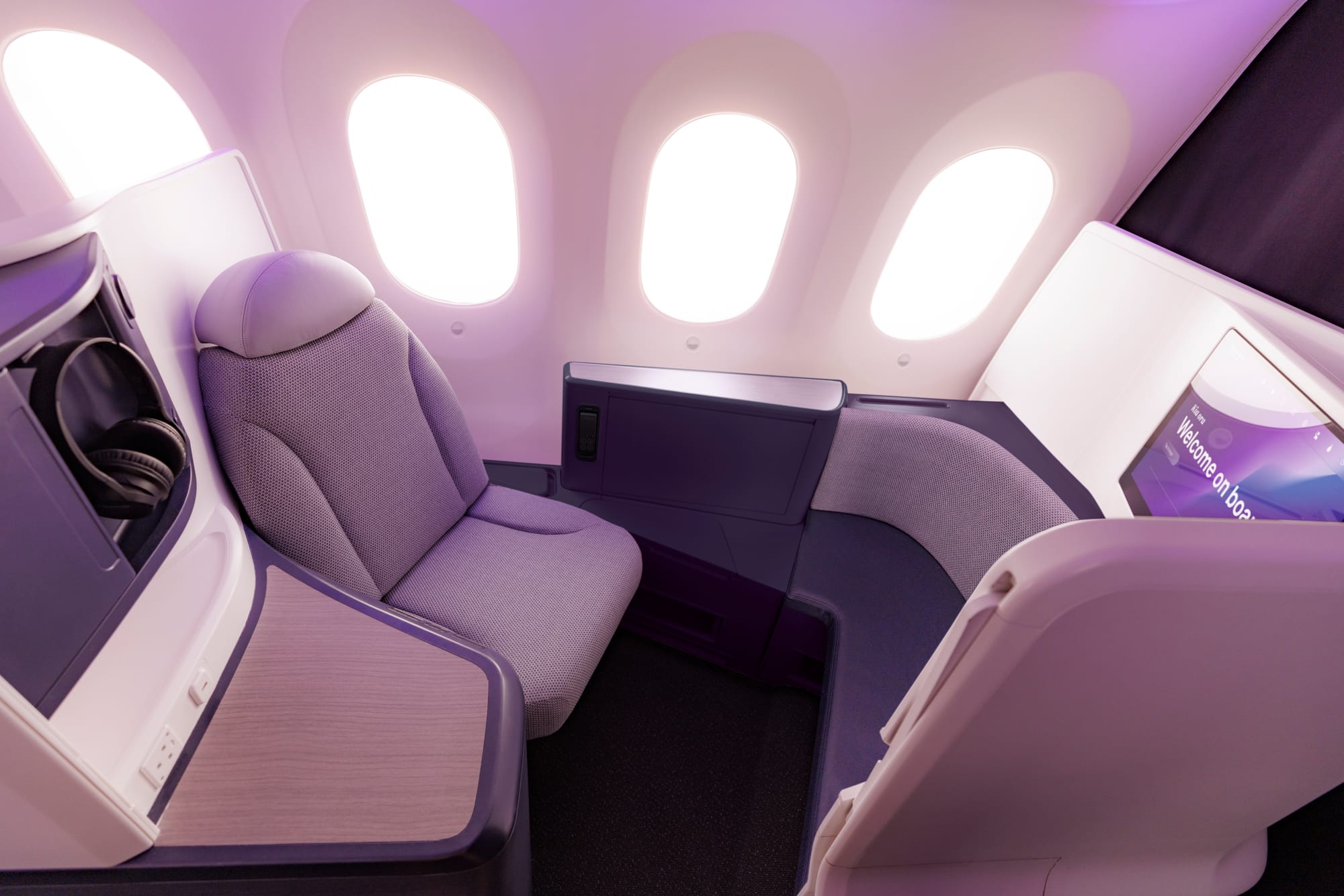
Among competing studio class products, Business Premier Luxe is a very simple concept: what would be a tessellated element of the seat in front holding the monitor is changed to instead be a monument that is essentially a thinly-padded bench with a monitor poking in at an angle around 50cm above the bench.
It will enable partner dining, although on the stand at AIX this wasn’t massively impressive owing to the relatively small table, and quite uncomfortable for whoever had to sit with their back half against an angled monitor element.
Structurally, it’s notable that the front row seats are not specifically integrated monuments, which would reduce weight and save inches in the cabin.

The centre pair of the front row are especially unusual in their form, which reflects the same inward-facing herringbone layout as every other seat in the cabin, with the feet pointing towards the aisle, with a transition monument installed between the front row centre pair and the galley area storage behind.
If this seat had been more forward-facing — potentially integrated into a monument and/or higher storage area — this transition area could have been eased substantially, making more efficient use of the limited space on board.
Air New Zealand is planning a three-tier pricing structure for Business Premier Luxe:
- NZD 820 long haul (just under USD 500)
- NZD 380 mid haul (about USD 225)
- NZD 210 short haul (about USD 125)
On the longhaul side, that’s roughly in line with what other airlines like Virgin Atlantic charge for their front-row business-plus products.
It will be very informative to see how how pricing evolves, and whether some frequent flyers get it as a perk or at a reduced rate. With constrained galley space in the 787, too, will there be additional soft product or menu options for Business Premier Luxe?
Premium economy is a recline-forwards 41”-pitch ZIM seat, as seen on Lufthansa
Air New Zealand is installing a good-sized premium economy cabin with the ZIMprivacy PC02 seat, as seen on Swiss and Lufthansa. Air NZ has added useful elements like a PED (personal electronic device) holder slot when the bifold table is half-out, and some helpful athleisure-style bungee straps to stow items when the table isn’t retracted. Every seat, not just the front row, has a legrest.
For the Kiwi carrier and its passengers, the major change from its previous product that the seat is a fixed-b ack hard-shell that slides forward rather than reclining, pitched at 41” as previously — a good few inches more than many competing premium economy products. It will be instructive to directly compare a recliner versus a hard-shell in terms of passenger feedback here.

Notably, it does have shoulder belts to add a three-point restraint on takeoff and landing, presumably to avoid issues around the head injury criterion (HIC) including the neck injury element (Nij) and the risk of shatter damage to the large 15.6” inflight entertainment screen. A universal AC power socket plus USB A+C is also included.
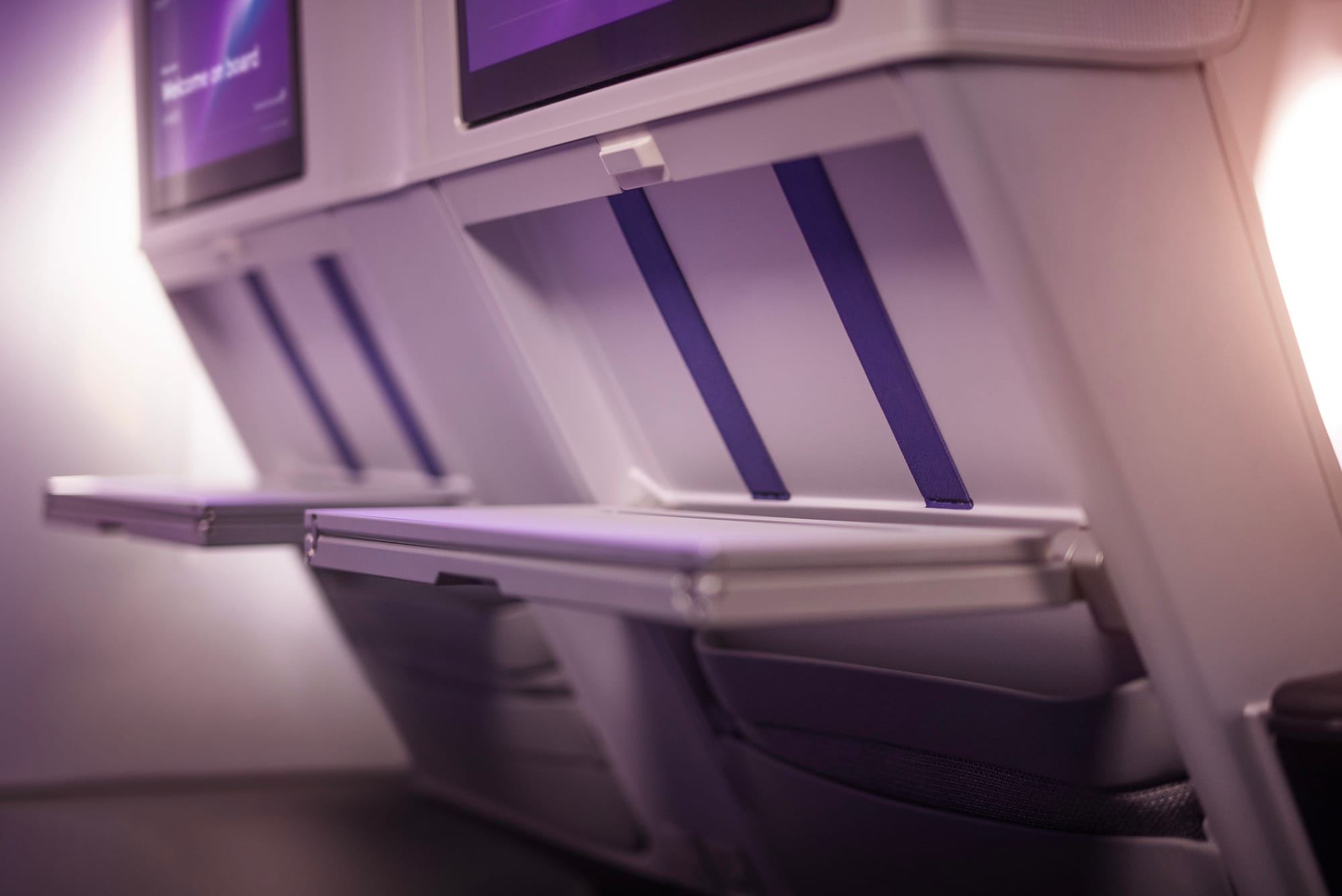
Air NZ’s layout diagram shows one lavatory behind the doors 2 entryway area that may well be for the 33 premium economy passengers specifically, although it’s not completely clear whether premium economy and business share these two lavs.
Overall, premium is economy feels like a solid upgrade with some inside baseball questions about product style, and premium economy passengers will be relatively happy.
Economy takes ZIM/HAECO Vector 2, keeps Skycouch, adds extra-legroom Stretch section
Economy onboard is the HAECO Vector 2, a decent enough seat that is now also produced by ZIM after their acquisition of HAECO’s seating arm. (Keep an eye out for name changes.)
There’s an inch less pitch than the previous generation of seats, now giving an industry longhaul standard 31” rather than 32”, but with the generational shin clearance improvements in Vector this may end up feeling more spacious for passengers.
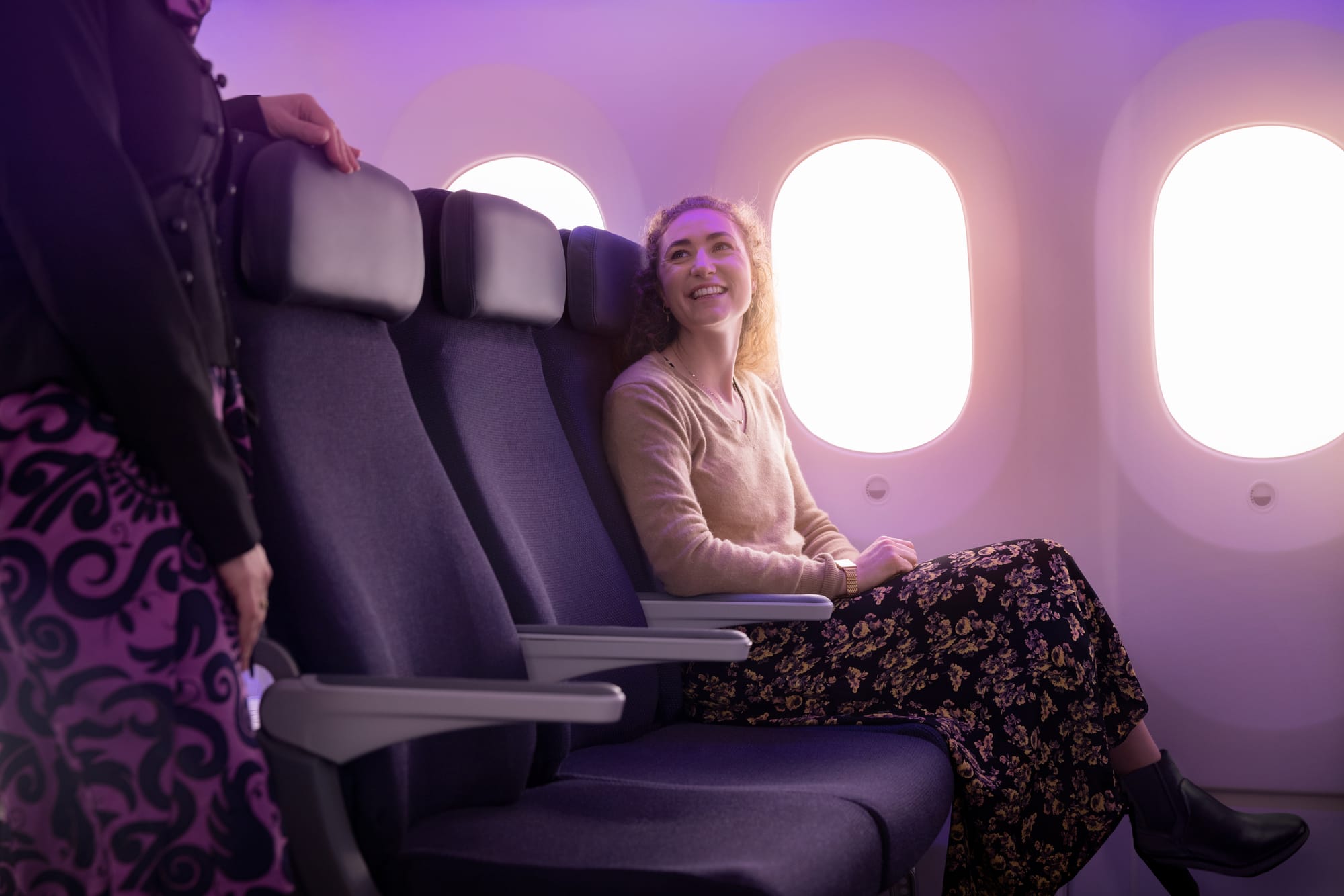
Air New Zealand is also débuting an “Economy Stretch” extra-legroom cabin pitched at 35”, towards the low end of the extra-legroom economy pack, and thirteen of Air NZ’s triple-seat Skycouches with their raising legrests. Economy Skynest bunks won’t be available on this aircraft.
The big upgrade is to inflight entertainment, where Air NZ says its 13.3” screen is 50 percent bigger than its predecessor. Power will be USB-A+C only.
This seems like a pretty average economy offering, with Skycouch as a useful upgrade for families, couples or anyone for whom a curling up on a bed just over 50” x 29” (that’s four feet, two inches by two feet, five inches) is attractive at Air NZ’s variable price points — this will vary by flight, but by and large solo passengers are better off upgrading to premium economy.
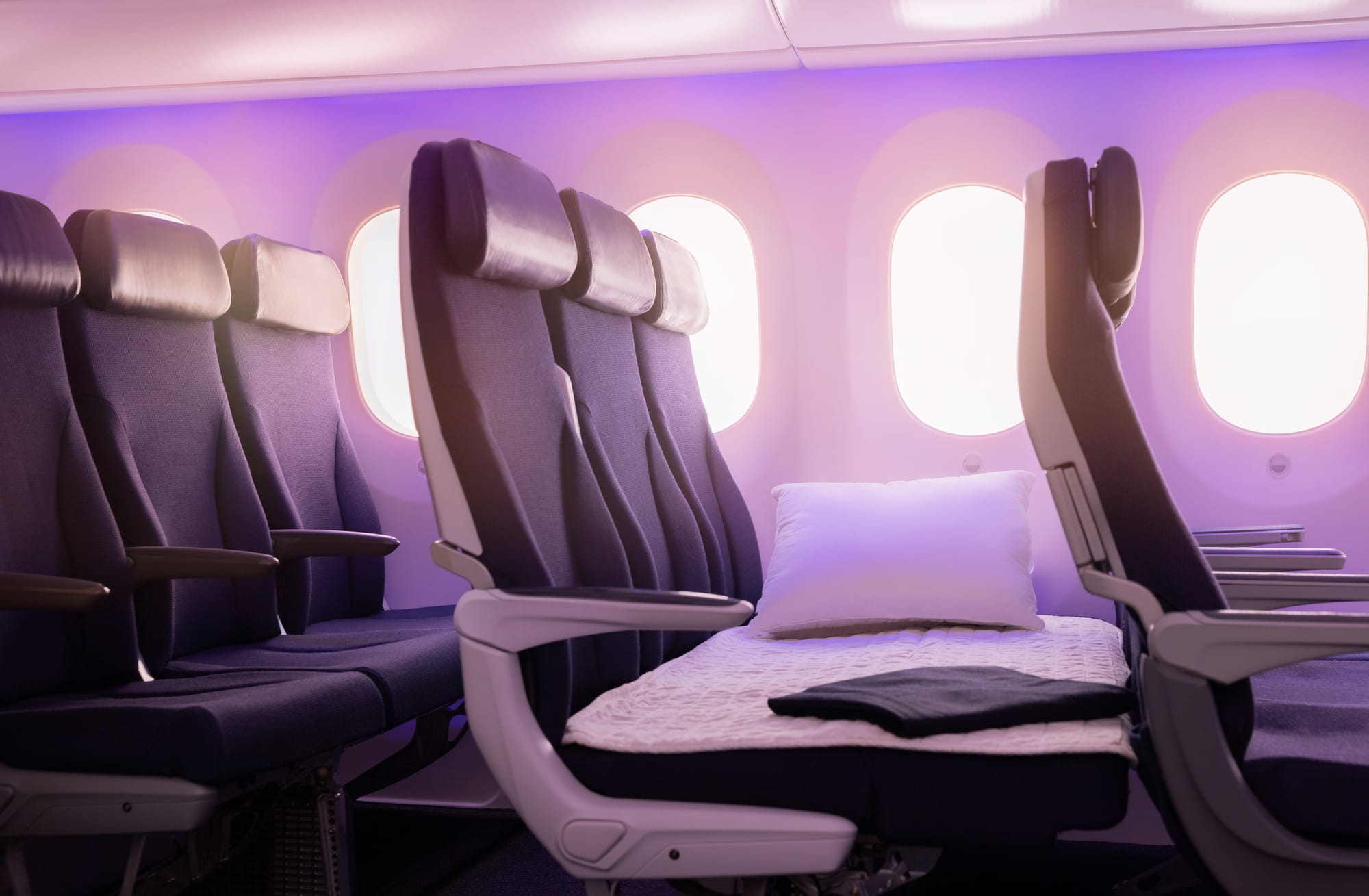
I do note that Air New Zealand’s Stretch shot focuses on an incredibly short model, whose head is substantially below the headrest and whose shoulders are very, very low on the seat.
This reminds me of the Hobbit-like models the airline used on early Skycouch photos that suggested the 4’2” x 2’5” Skycouch was long enough for two grown adults to lie flat across — quite the stretch.
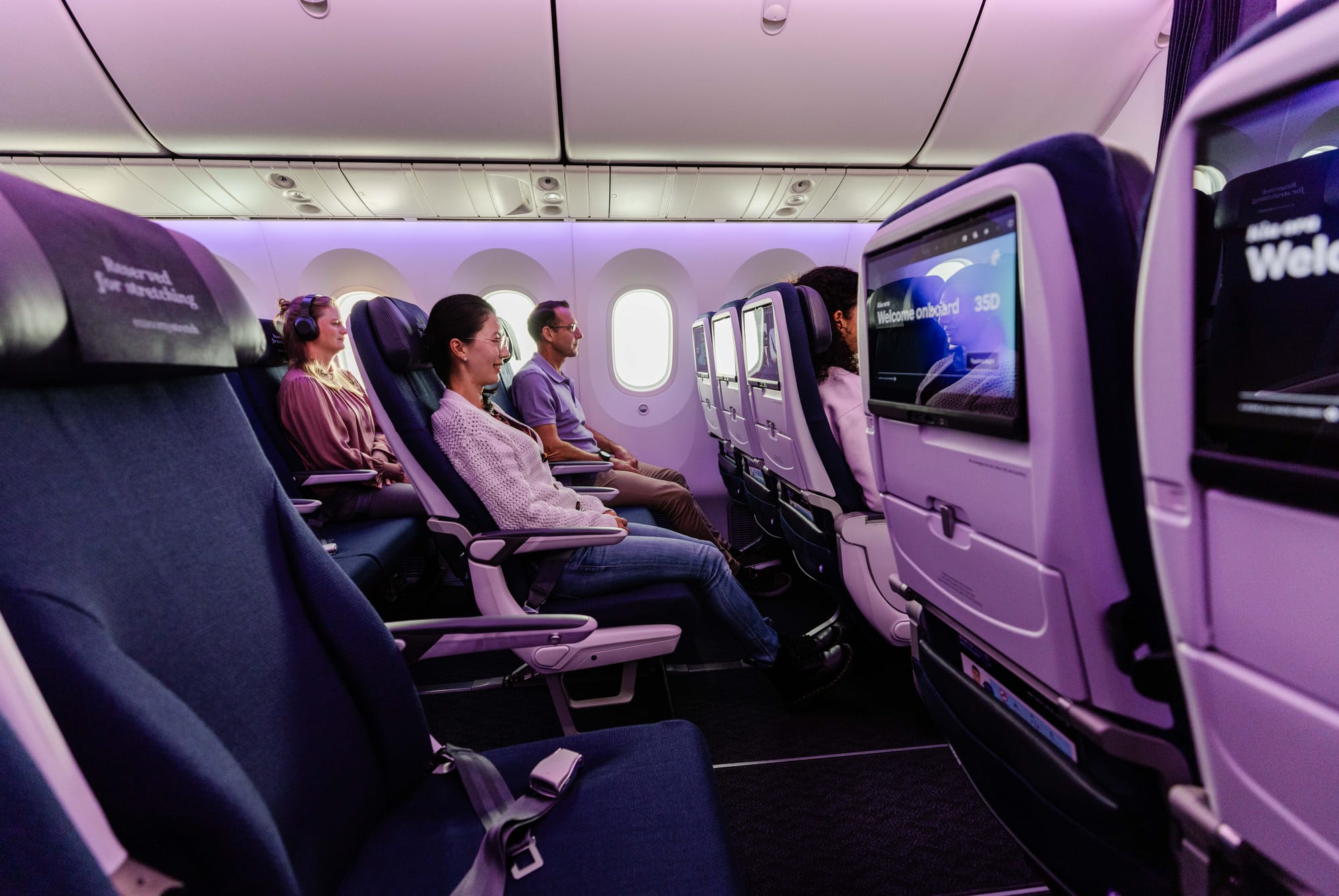
Taken as a whole, this set of cabins is by and large catching Air New Zealand up to where other airlines were a few years ago. This is an improvement on what the national airline of Aotearoa was offering before, but on balance it may not move the needle enough to retain its position in the pack as other airlines move ahead with new generations of seats.
Continue reading at The Up Front with:
- our deep-dive analysis of the studio-class suite product generation
- top-notch aesthetics on a competing product, United Airlines’ and PriestmanGoode’s Polaris and Polaris Studio implementation of the Elevate Ascent
- more about us as we launch The Up Front — our people, principles and technology for bringing you a new type of independent aviation journalism
- why we created The Up Front, why we write, and how you can support our new model for aviation journalism


